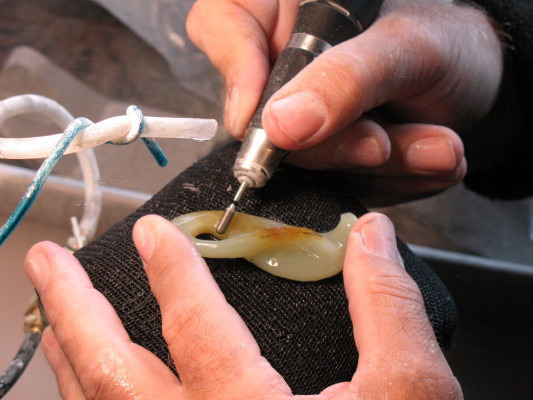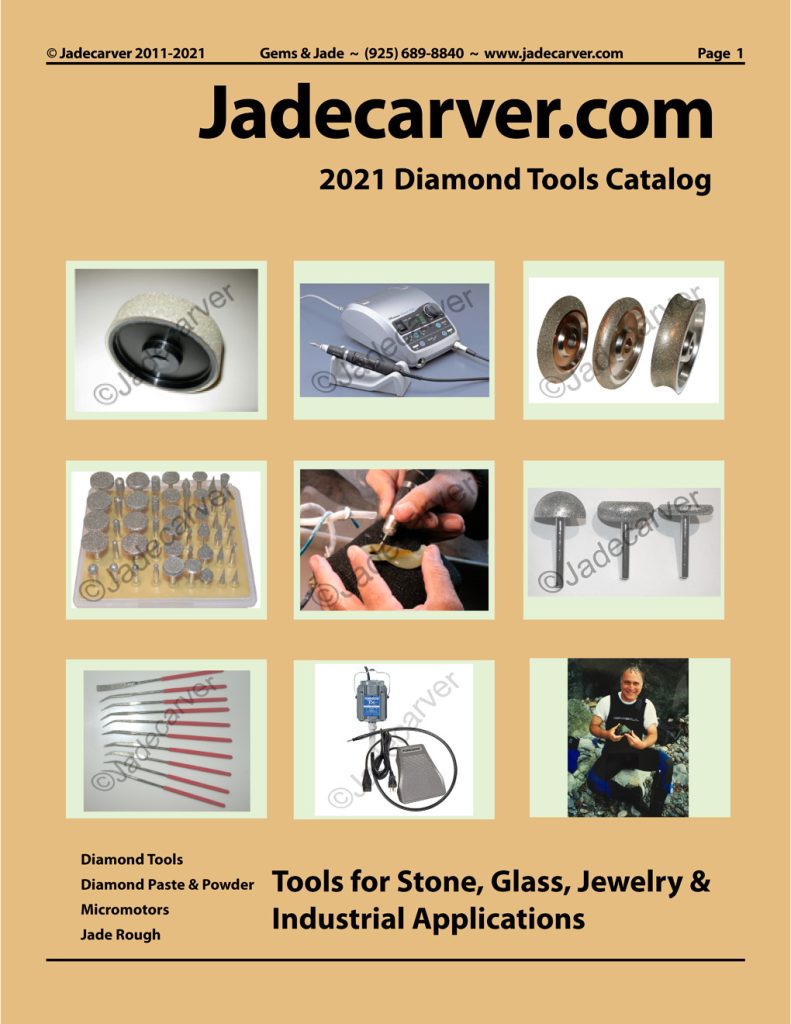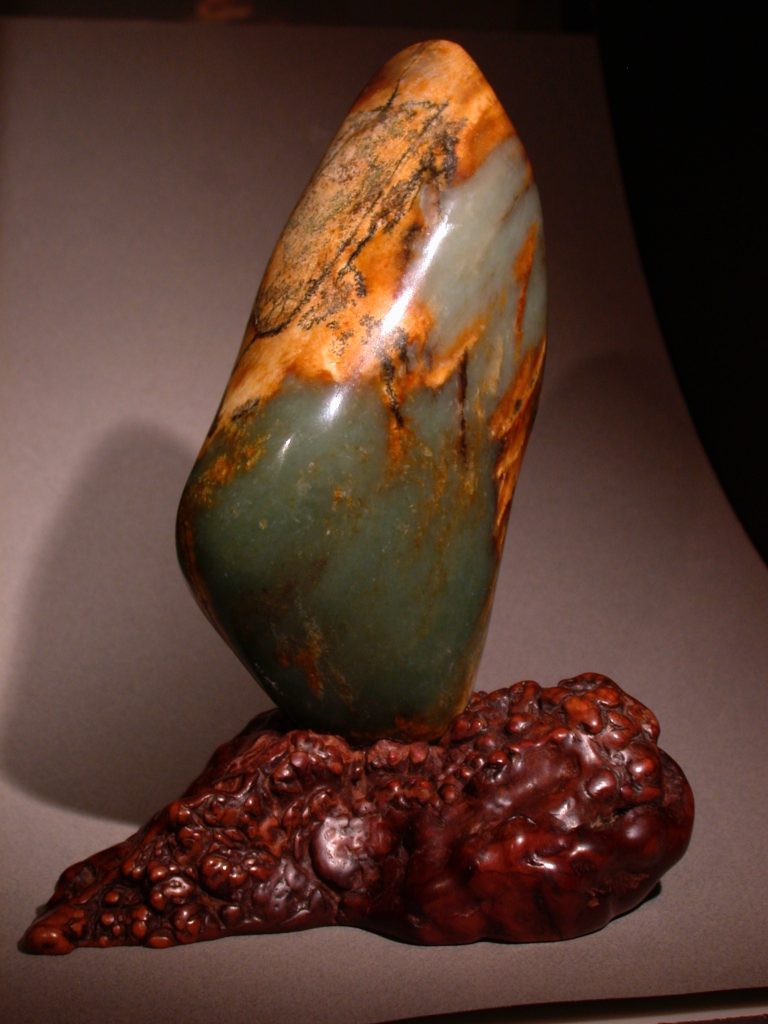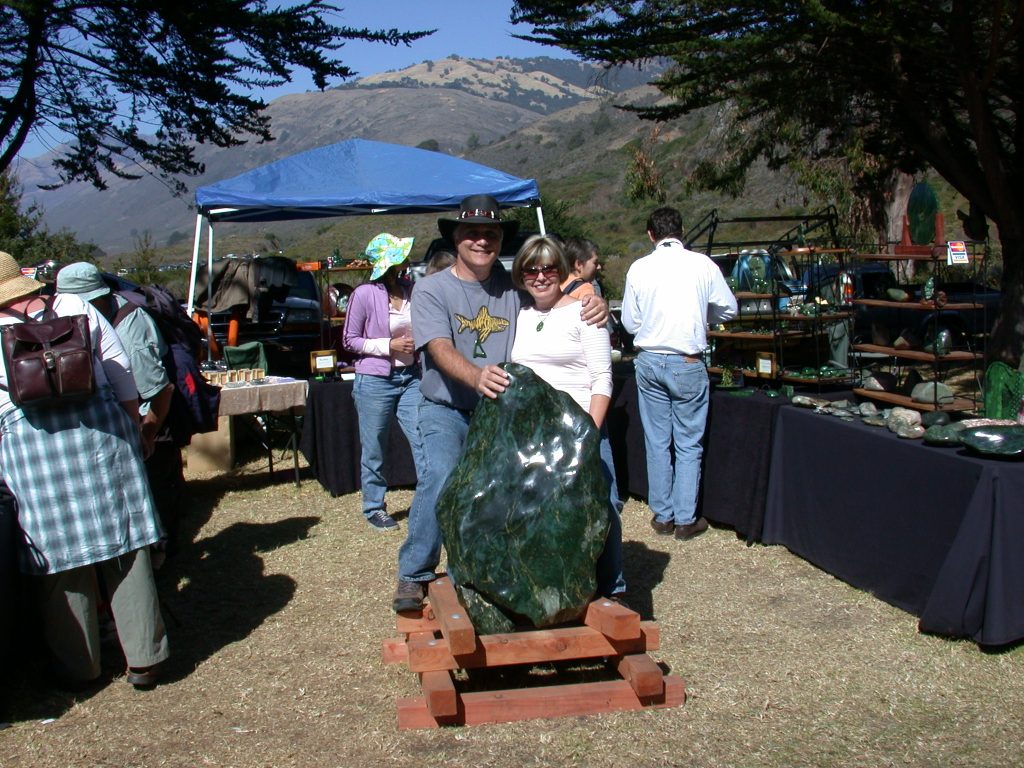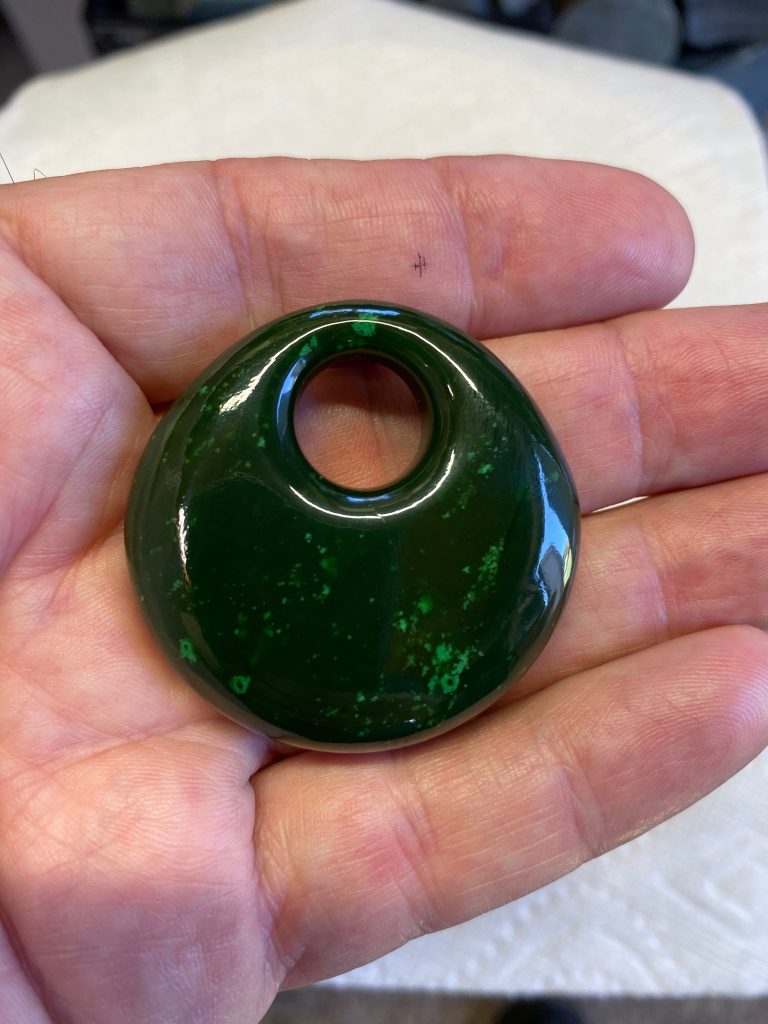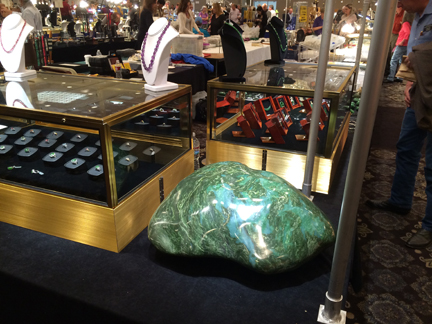Jadecarver.com
David Clayton
Sculptures • Carvings • Jewelry • Earrings • Pendants • Specimens
• Rough • Ocean Cobbles • Carving Tools
Jadecarver.com
David Clayton
Sculptures • Carvings • Jewelry • Earrings • Pendants • Specimens • Rough • Ocean Cobbles • Carving Tools
David Clayton began scuba diving for jade in the Pacific ocean off the Big Sur coast of California in 1969. He learned lapidary techniques in the early 1970‘s and subsequently applied these skills to sculpting the jades he had collected. In the 1970s & 1980s most lapidary work was performed with silicon carbide tools.
Carving jade with silicon carbide tools was slow and tedious. So David searched and found a factory that would custom manufacture various designs and configurations from his CAD drawings of diamond tools so he could use them to carve jade more efficiently.
This led to expanding the business from jade jewelry and rough to diamond tools as well.
The 25 page Jadecarver Diamond Tool Catalog can be downloaded at his web site: Jadecarver.com
Basic Information about “Jade”:
There are two different minerals that are called “Jade”: Nephrite and Jadeite
Nephrite was referred to as the Stone of Heaven in ancient China. Then in the 1770s-1780s a new find of “Jade” was imported into China from what we now know as Myanmar (previously Burma).
This stone looked, carved and had similar colorations to the nephrite jades that had been carved in China for centuries so it was also considered jade.
Only later was was it to be discovered a completely different mineral.
Nephrite jade is 6.5-7 on the Mohs scale which is harder than steel and is extremely tough because of its interlocking fibrous structure.
Jadeite jade is 7-7.5 on the Mohs scale and is crystalline in structure and is not as tough as nephrite. Note that much of the jadeite that is sold today has been treated and/or color enhanced.


